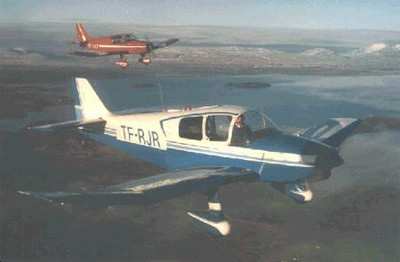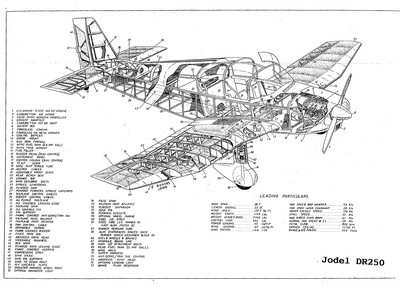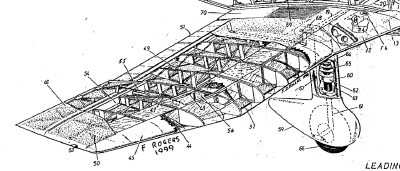Two Belgians Perish As Robin DR250 Sheds Wing
Two Belgian tourists died in a crash Monday in County Galway,
Ireland. The airplane, an Avions Robin DR 250, lost a wing soon
after takeoff and crashed on a cricket pitch less than a mile from
Galway airport in Carnmore.

The two middle-aged men died instantly.
The Irish Air Accident Investigation Unit (AAIU) has begun an
investigation and is keying on the airplane's wing, which was
reported by witnesses to separate in flight, and was reportedly
found over 500 meters away from the main wreckage. (At press time,
some late reports said that it was only part of the wing, possibly
a control surface; and that the pilots appeared to have some
control of the plummeting craft).
All other significant parts appear to be accounted for at the
main impact point.
Graphic post-impact pictures in the Irish press (which we'll
spare you) showed signs of a violent impact with no postcrash fire.
The fuel tank had been filled in expectation of a four- to
four-and-a-half hour flight home to Belgium.
Aero-News readers are cautioned, as always, that early
crash-scene and eyewitness perceptions are often contradicted by
the painstaking analysis applied in a thorough mishap
investigation, and all information in this report should be
considered preliminary and subject to revision.

Luck of the Irish?
Paul Hynes, County Galway Cricket Club Captain, told the Galway
Independent that Monday is the one day that there's no match on the
cricket pitch. He was nearby, but didn't witness the accident
himself. "We were very lucky. We were playing the day before on the
field," he said -- at about that same time.
Asked about the damage to the cricket pitch, Hynes was taken
aback. His concern was for the victims of the crash and their
families; damage to his cricket pitch was "irrelevant." He further
promised the sportsmen would, "do something," in memory of the
victims. But in true cricket-club fashion: "we'll have to have a
meeting to decide what."
The Investigation
It was immediately apparent that the occupants of the aircraft
had perished on impact from non-survivable impact forces, so their
remains were respectfully covered by the Garda (Irish Police) until
AAIU authorized investigators observed and photographed them in
situ and allowed them to be removed.
The family members of the unfortunate Belgians were notified,
and came to Galway to claim the bodies. The crash victims have not
been identified publicly.
The AAIU conducts investigations much like the British AAIB or
US NTSB, although it has fewer resources than either (and
fortunately fewer accidents to investigate). It will seek
assistance from other parties as necessary. All avenues of
investigation will be reviewed, so that the unit has a complete
picture of the ill-fated flight: weather, crew, airspace and
control, and of course, the aircraft.
The responsible Inspector of Air Accidents with the Air Accident
Investigation Unit spoke to the Galway Independent newspaper. "The
focus of the technical inspection will be to determine the
airworthiness of the aircraft and to determine the cause of the
failure of the wing," Jurgen Whyte said.
As evidence that the aircraft broke up inflight is significant,
the AAIU is examining the aircraft wreckage to determine how and
why that happened. The many operators of Jodel and Robin aircraft,
all of which share design concepts and construction materials, are
watching with some anxiety.
The Aircraft
The Jodel and Robin aircraft (which are all also often called
"Jodel" although this isn't 100% accurate) have a very long and
involved history, which sometimes confuses even type aficionados.
From its roots as a 2-seat homebuilt taildragger airplane, the
basic design evolved into a wide range of certified and
experimental aircraft.
It is one of the most popular airplanes in Europe, particularly
on the Continent. (France especially, as it's not only the national
home of the design, but also has liberal rules for homebuilt
airplanes, and a very active sport-aviation group, the RSA). About
3,500 each of homebuilt and factory-built, fully-type-certified
aircraft have been made, and they have a decent safety record.
The accident aircraft was a factory-built, certified, four-seat
tailwheel airplane. Under European rules, it was subject to
thorough annual inspections by a licensed aviation mechanic.

Was It The Design, In Wood? Probably Not.
The wing structure in all these designs is made of wood and
assembled with glue. Spars are spruce, skin birch plywood,
assembled to one another with phenol-resorcinol glue: venerable and
extremely well-understood and -tested materials. Aero-News has not
discovered any prior history of inflight separation in this type or
family of designs.
Wood still flies in the wings of many early Mooneys, hundreds of
Bellancas, and many antiques; in the 1940s, even very high
performance aircraft like the DeHavilland Vampire and Messerschmitt
Me 163 fighters had wooden wings, and even many "all metal"
airplanes relied on wood tail and control surfaces.
Not to mention the 7,000 plus Jodel and Robin aircraft that have
been flying for many years with no similar accident. The
current manufacturer of Robin aircraft, Apex Aircraft in France,
notes on its website (our translation from French) that wood is "a
natural composite with unequalled strength to weight
characteristics".
In wooden aircraft in general, structural failure is not unknown
but can usually be attributed to dry rot, mold or something
weakening the structure to much less than design strength. The
usual means of combating this kind of failure is regular
inspections during maintenance periods: the mechanisms of failure
take time to weaken the structure, and so should be readily
detectable.
 ANN's Daily Aero-Linx (04.16.24)
ANN's Daily Aero-Linx (04.16.24) Aero-News: Quote of the Day (04.16.24)
Aero-News: Quote of the Day (04.16.24) Airborne 04.10.24: SnF24!, A50 Heritage Reveal, HeliCycle!, Montaer MC-01
Airborne 04.10.24: SnF24!, A50 Heritage Reveal, HeliCycle!, Montaer MC-01 Airborne 04.12.24: SnF24!, G100UL Is Here, Holy Micro, Plane Tags
Airborne 04.12.24: SnF24!, G100UL Is Here, Holy Micro, Plane Tags Airborne-Flight Training 04.17.24: Feds Need Controllers, Spirit Delay, Redbird
Airborne-Flight Training 04.17.24: Feds Need Controllers, Spirit Delay, Redbird





